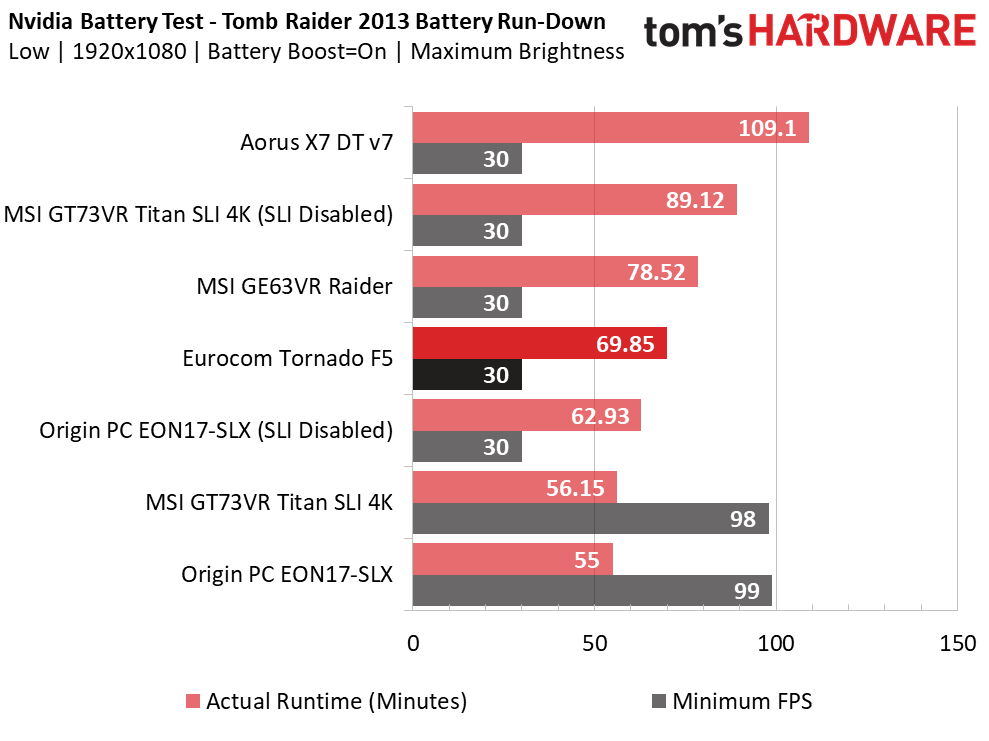Eurocom Tornado F5 Gaming Laptop Review
Why you can trust Tom's Hardware
Battery, Thermal & Display Testing
Battery Test - Tomb Raider 2013 Battery Rundown
To test battery life, we set each laptop’s battery profile to Balanced while running Tomb Raider’s built-in benchmark at the lowest detail preset. The frame rate is locked at 30 FPS through GeForce Experience’s Battery Boost to limit the strain on the battery. Meanwhile, a script running in the background monitors and time stamps the system’s battery percentage. The laptops are set to hibernate once battery levels reach 5%. We test the battery life at 200 nits.
In the past, we’ve found that high-powered systems such as the Origin PC EON17-SLX have less than stellar battery life. Unfortunately, this is the case with Eurocom Tornado F5, whose hefty configuration comes at the expense of its longevity. At a full charge, the Tornado F5 barely delivers an hour of game time, making it the lowest scoring single GPU laptop in terms of battery life.
Perhaps this has more to do with the battery capacity than the components. The Tornado F5 has an 8-cell 75.24Wh, while the EON17-SLX has an 89Wh battery. Normally, these batteries would offer adequate power for a standard gaming laptop, but they’re not enough for laptops with desktop processors and powerful GPUs. The MSI GT73VR Titan SLI suffers the same fate, providing power to two GTX 1070s with a 74.25Wh battery. For comparison, the Aorus X7 DT v7 contains a 94.24Wh battery. We wonder why other manufacturers don't go this route.
Thermal Testing
We used our Optris PI 640 infrared camera to measure the laptop’s thermals. For more information about how we test, be sure to check out our Measurement Science article.

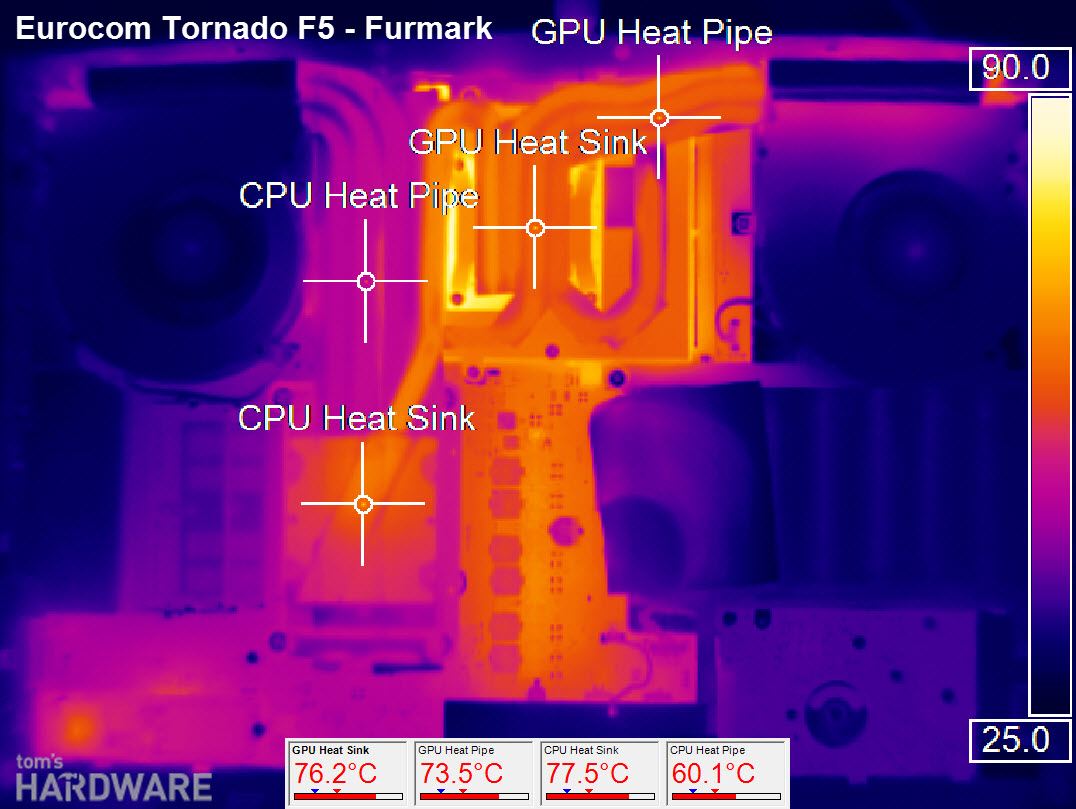

Heat dissipation is a major concern in gaming laptops, especially ones with high-end components. At idle, the Tornado F5's cooling solution hovers between 33°C and 43°C; comparatively, we usually see idle temperatures a bit higher. After running a 15 minute Furmark Torture test, the temperature rises to 77.5°C at its highest on the CPU heat sink, but never above that. Our AIDA64 GPU log depicts a maximum temperature of 70°C, which is well within the acceptable range for a laptop.
Perhaps unsurprisingly, the Titan SLI, Tornado F5, and EON17-SLX receive top marks in thermals thanks to their bulky builds and robust cooling solutions. Meanwhile, the X7 and Raider run a bit hotter because of their size constrictions. The GTX 1080 is incredibly powerful, and therefore generates more heat, and although the X7 doesn’t have to struggle with a desktop processor, its cooling solution is packed into a smaller chassis.
Display Testing
We used the SpectraCal C6 Colorimeter to measure the Eurocom Tornado F5's display. Be sure to check out our Display Testing Explained article for a full description of our test methodology.
Get Tom's Hardware's best news and in-depth reviews, straight to your inbox.


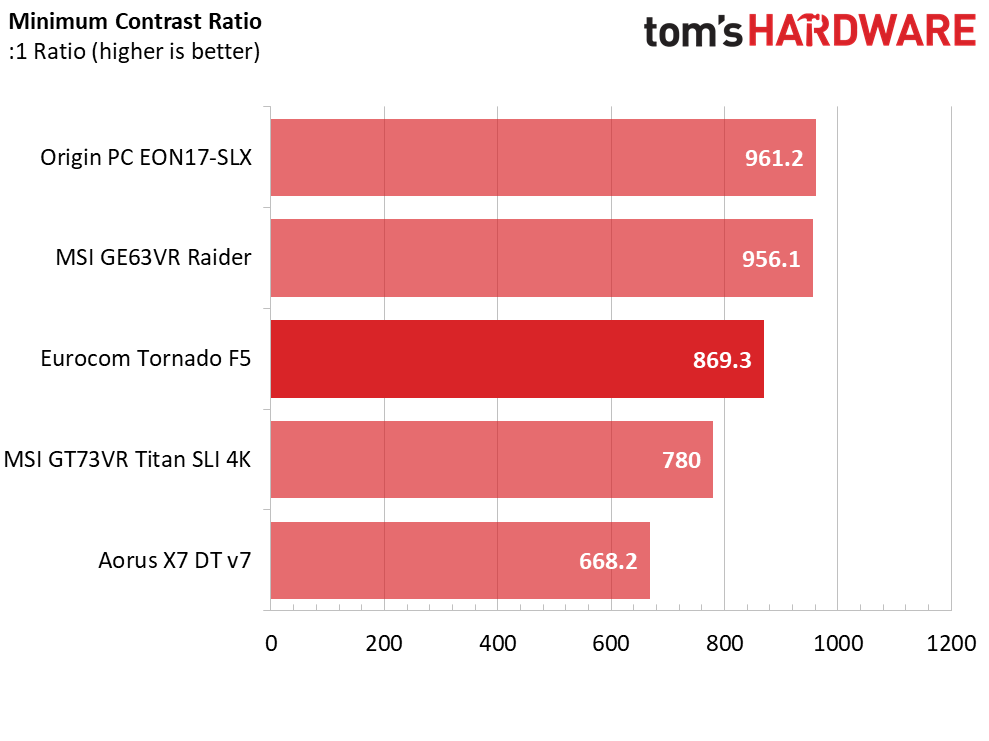
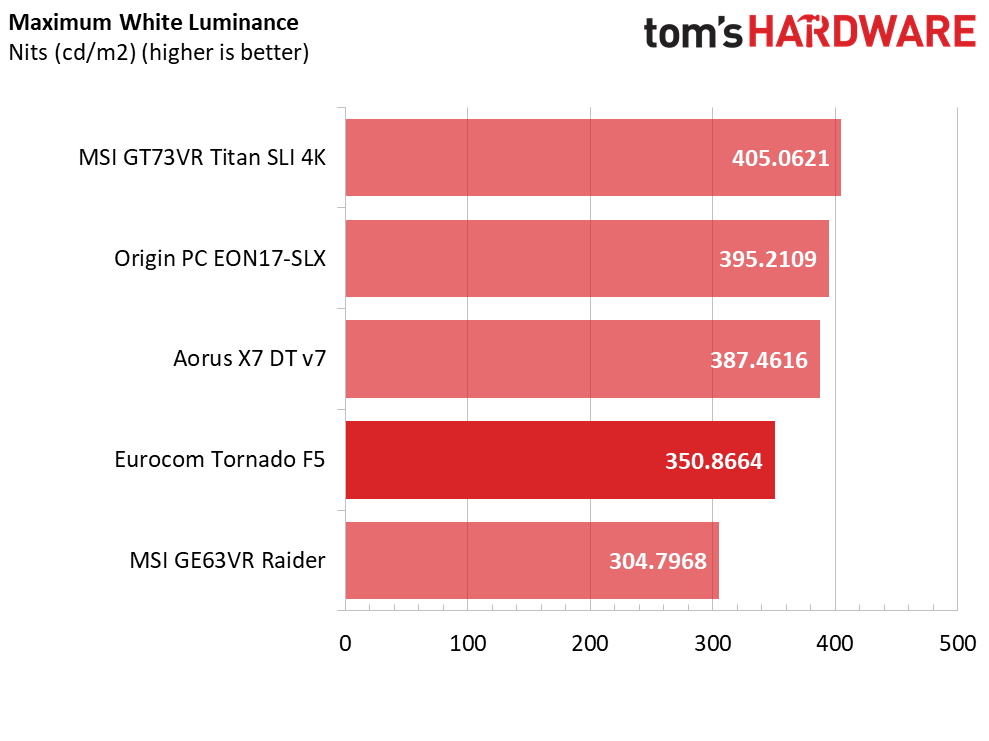


At minimum brightness, the Eurocom’s display exhibits a decently low black luminance, but the white luminance needs to be brighter. As a result, the minimum contrast ratio sits at 869.3:1, which isn’t bad, but images can look a little flat. At maximum brightness, white luminance is adequately high, but the black luminance is also too high, again resulting in a decent contrast ratio of 882.4. Again, images are a bit flatter than those of the competition.





RGB levels are similar to what we find on many other laptop displays; the levels begin balanced, but that changes as brightness is raised. In particular, red levels rise while green and blue drop. At maximum brightness, however, the blue level spikes above the optimal value, and with the high red level that creates a purple-ish tint.
Gamma levels fluctuate wildly, starting balanced and quickly rising past 2.4 between 15% and 30% brightness. Meanwhile, the gamma drops below 2.2 at 40% brightness and only recovers at 100% brightness. You’ll deal with a bit of oversaturation at low brightness and undersaturation at high brightness. Despite this, the gamma average comes close to 2.2

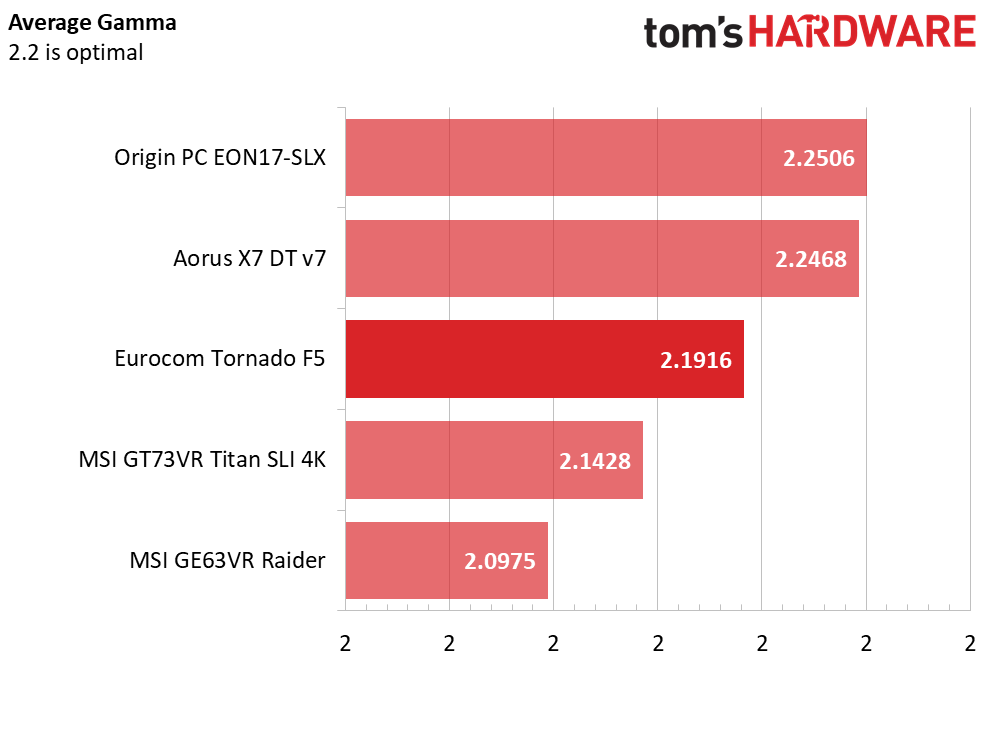

Inaccuracies in grayscale are virtually unnoticeable until 70% brightness, where they increase dramatically. The resulting grayscale DeltaE 2000 is 3.5546, which is decent and will only bother the most discerning eyes.
The display's overall average color error sits at 3.9477, which isn't bad. The ideal target dE 2000 is 3. At just under 4, we begin to see a bit of discoloration, particularly in greens, yellows, and cyans. Still, only the most critical viewers will be annoyed. Once again, the Eurocom lands in the middle of the road; the laptops it beats—the Titan SLI and the EON17-SLX—are notoriously inaccurate. The ones it loses to—the Raider and the X7—are some of the best we've seen.
MORE: Best Gaming Laptops
MORE: Gaming Laptop Previews
MORE: All Laptop Content
Current page: Battery, Thermal & Display Testing
Prev Page Gaming Benchmarks Next Page Price Analysis & Conclusion